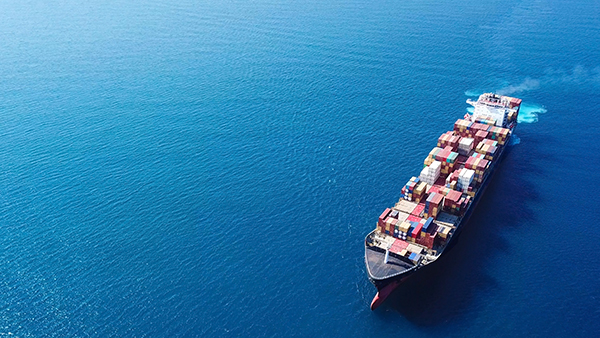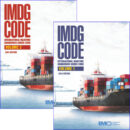
The week just finished saw the nation celebrate Thanksgiving and roll into the major stretch of the December holidays. As we all await the end of what has been an enormously trying year, let’s focus on helping employees and the transport chain stay safe and in doing our part to help improve the nation’s continued response to the pandemic. Keep it up everyone! The week just concluded featured a rulemaking release by PHMSA as its major item. See all the details in the news below:
PHMSA
In its most significant rulemaking in some time, the agency published HM-219C, intended to reduce regulatory burdens. The rule contains a number of actions intended to help make the HMR less complex to use and also to increase safety of transport. Below is a summary of the rule’s major elements:
- Revise § 173.31 to prohibit after December 31, 2020, the use of rail tank cars with shells or heads constructed of non-normalized steel used for transportation of poison by-inhalation (PIH) materials.
- Harmonize with the UN Model Regulations the limited quantity exceptions for more than 100 entries in the HMT, particularly the corrosives.
- Revise § 173.302(b)(2) to allow a minimum height of 12 mm (0.47 inches) for a proper shipping name marked on a portable tank with a capacity of less than 3,785 L (1,000 gallons).
- Revise § 173.28(c)(1)(i) to allow for regulatory flexibility for cleaning metal drums for reuse and clarifying the existing cleaning standard.
- Revise § 173.5b to allow for the continued use of Portable and Mobile Refrigerator Systems placed into service prior to 1991 that are rated to a minimum service pressure of 250 pounds per square inch (psig).
- Incorporate by reference updated versions of multiple Compressed Gas Association (CGA) publications.
- Remove the reference to Special Provision 103 in § 172.101 from Column (7) for four HMT entries to allow them to be shipped as safety devices and in § 172.102 remove Special Provision 103 altogether.
- Remove the words ”manufactured before September 1, 1995” from § 180.417(a)(3) to allow for an alternative report for cargo tanks manufactured after September 1, 1985.
- Revise the basis weight tolerance provided in § 178.521 from +5 percent to +10 percent from the nominal basis weight reported in the initial design qualification test report for paper shipping sacks.
- Revise § 173.308(d)(3) to harmonize with the IMDG Code by removing the requirement for a closed transport container to have the warning mark ”WARNING-MAY CONTAIN EXPLOSIVE MIXTURES WITH AIR- KEEP IGNITION SOURCES AWAY WHEN OPENING” when transporting lighters.
- In §§ 173.244a)(2) and 173.314(c) make the ”interim” rail tank car specifications the ”final” specifications for the transportation of PIH materials and assigning the unique identifier of DOT-105H600W for the HM-246 tank cars transporting PIH materials by rail.
- In § 173.31 prohibit, after December 31, 2027, the use of certain rail tank cars for the transportation of PIH materials.
- Allow for all waste materials to be managed in accordance with the lab pack exception and associated paragraphs in § 173.12 irrespective of whether they meet the definition of a hazardous waste per the EPA or the RCRA.
- Incorporate by reference the 2017 version of the ASME BPVC Sections II (Parts A and B, C and D), VIII (Division 1), and IX into the HMR.
- Revise §§ 171.23, 173.302, and 173.304 to permit the import of filled pi-marked foreign pressure receptacles for intermediate storage, transport to point of use, discharge, and export, as well as the import of certain pi-marked foreign pressure receptacles filling, intermediate storage, and export.
- Revise § 172.101(c) to clarify that the word “stabilized” must be included as part of the proper shipping name when the HMR requires stabilization before transportation.
- Correct § 171.7(r) to include the address of the IME and to incorporate the IME/Association of Energy Service Companies (AESC) JPG Standard, also known as the ”Guide to Obtaining DOT Approval of Jet Perforating Guns using AESC/IME Perforating Gun Specifications,” Ver. 02, dated September 1, 2017 as material incorporated by reference.
- Update to the January 1, 2018 version of the APA Standard 87-1, ”Standard for Construction and Approval for Transportation of Fireworks, Novelties, and Theatrical Pyrotechnics”, which is currently incorporated by reference in § 171.7(f) of the HMR. However specific appendices were not incorporated.
IMDG Code
The IMO announced a five-month delay in enforcement of the coming Amendment 40-20 of the IMDG Code due to the ongoing pandemic. The new mandatory date is June 1st, 2022 instead of January 1st, 2022. Voluntary compliance remains unchanged at January 1st, 2021. Here’s the text of the IMO’s related announcement:
IMDG Code, 2020 Edition
In view of the exceptional circumstances brought about by the COVID-19 virus this year, and the ensuing disruption and delay caused to the IMO meeting schedule, please note that Amendment 40-20 of the IMDG Code will become mandatory from 1 June 2022 but may be applied by Administrations in whole or in part on a voluntary basis from 1 January 2021.
EPA
The agency extended the deadline date for chemical use reporting under the Toxic Substances Control Act (TSCA) to January 29th, 2021. Affected organizations must complete needed reporting by that date. See the extension here.
FMCSA
The agency published an ICR dealing with the Motor Carrier Records Change Form (MSCA-5889). FMCSA uses the form to keep federally required motor carrier reporting information current. See the ICR here.
U.S. Coast Guard
The Coast Guard published a proposed rule that will facilitate the future submission of regulated facility operating and emergency manuals via electronic means vice the current mail in requirement. The action I intended to ease reporting. See the proposal here.
Labelmaster is a full-service provider of products, shipping and training software, and professional consulting services to assist the DG and HS&E professional to comply with national and international regulations. See our full line of solutions at www.labelmaster.com.


